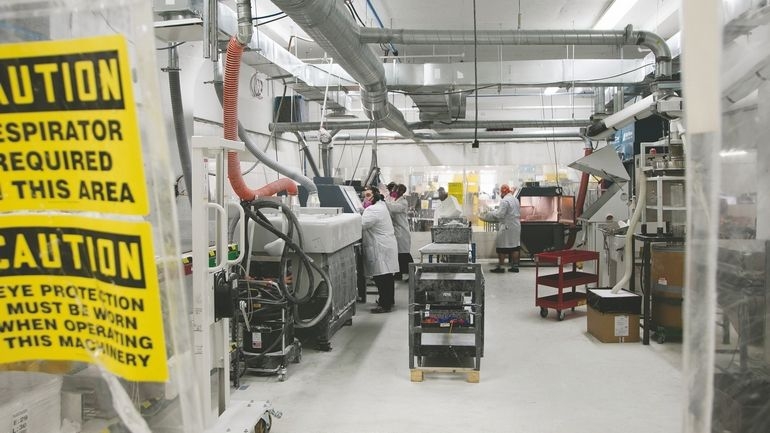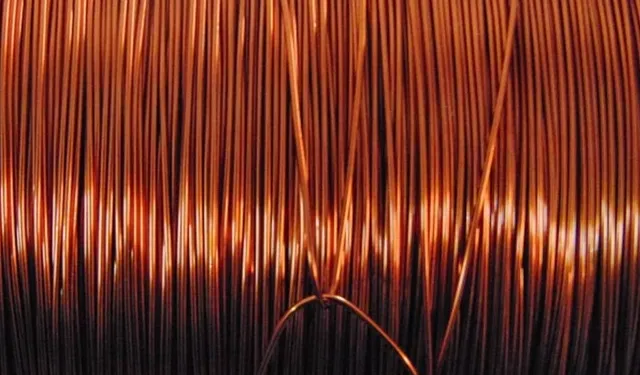May 2, 2016 Updated 5/2/2016
Email Print
Matthew Flamm

Buck Ennis Production at Shapeways’ 3-D printing facility in New York.
Bre Pettis launched his desktop 3-D-printer company, MakerBot, in 2009. With his Brooklyn manufacturing ethos and trendy MakerBot outlets, he became the face of New York City’s maker movement.
Peter Weijmarshausen, meanwhile, brought his on-demand, industrial 3-D-printing company, Shapeways, from the Netherlands in 2011. He quietly set to work in a Long Island City factory in the New York borough of Queens that even today still doesn’t have a sign on it.
In April, MakerBot’s a-printer-on-every-desk approach went out the window when the firm announced it was outsourcing the manufacturing of 3-D printers to Florida-based Jabil, which will be producing those printers in cheaper locations like China. Meanwhile, Shapeways’ 25,000-square-foot facility is five times bigger than it was when it opened in 2012. Every day, the company ships more than 600 packages containing iPhone covers, coffee cups, drone accessories, model trains, jewelry, wearable tech and assorted knickknacks. The items are manufactured for the designers and others who sell their goods through Shapeways’ Etsy-like marketplace.
Both men thought being close to their customers meant a New York City location was key. Yet the fates of their firms show the strength of Weijmarshausen’s vision: Customers have no interest in owning 3-D printers; they really just want their 3-D printed products.
“We have factories in two of the most expensive places in the world [to manufacture],” Weijmarshausen said, referring to both New York and the Shapeways facility in Eindhoven, the Netherlands, where the company began. Both factories are successful, with “healthy margins,” he added.
MakerBot’s bet that consumers would want to own low-priced 3-D printers was an initial success for Pettis, who sold the company to Minnesota-based Stratasys in 2013, for $ 400 million. But a large consumer market failed to materialize. Pettis later left the company, and MakerBot closed its stores and began layoffs last year.
MakerBot’s struggles have only reinforced Shapeways’ approach. “I simply believe the [desktop printer] was not a consumer product,” Weijmarshausen said. “It’s much more about the final product than about the tool.”
Weijmarshausen declined to provide revenue figures or say whether Shapeways is profitable. He noted that it had about 20 employees four years ago and now has 200, including 70 in Long Island City and another 70 at its corporate headquarters in Manhattan. Since its founding, in 2007, the company has raised $ 76 million in venture capital from A-list backers that include Union Square Ventures and Andreessen Horowitz.
MakerBot still believes there will be a strong consumer market for its 3-D printers, but not until they are easier to use. In the meantime, it’s focusing on the educational and professional markets. “We’re working very hard to address the consumer market,” CEO Jonathan Jaglom said last week. “But it’s a few years away.”
Others think even that estimate is a stretch. “The average consumer buys these printers, downloads a few basic [designs], and then the printers sit there and collect dust,” said industry analyst Terry Wohlers.
In the next year, Shapeways expects to have new industrial printers that will be 10 times faster than the ones it uses now, enabling products to be manufactured overnight, rather than over four to five days.
At least one other New York company has adopted a strategy of providing 3-D printing as a service — and has kept production in Brooklyn. Voodoo Manufacturing, which launched in East Williamsburg in October, uses desktop printers networked to each other to produce custom marketing materials for the likes of Verizon Wireless and General Mills, as well as parts for hardware startups. The company, which has just eight employees, is almost profitable, co-founder and CEO Max Friefeld said.
“We can produce parts so cheaply at these volumes that we are really competing with traditional manufacturing companies, more than with other 3-D-printing services,” he said.



























